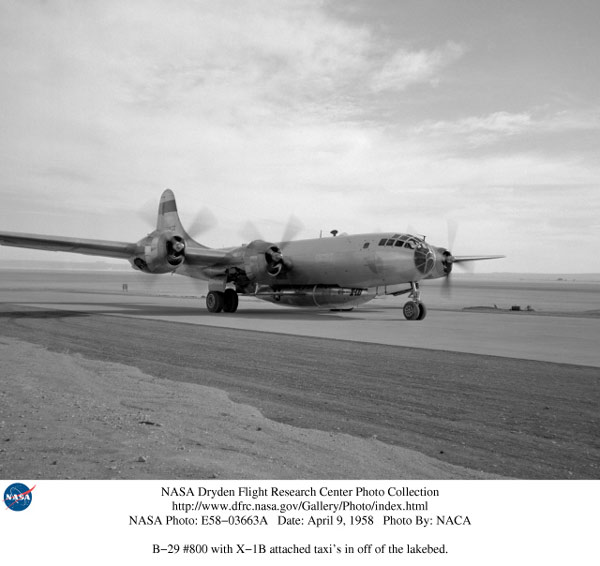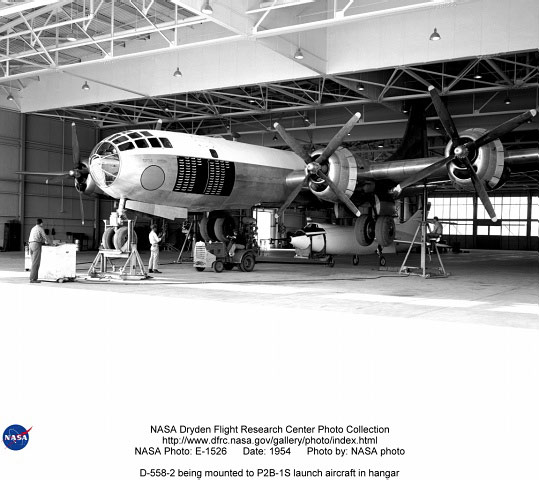X-1E and B-29 taxi and takeoff from Edwards Air Force Base
NASA ARCHIVES - Page 3
In 1950, Douglas replaced the turbojet with an LR-8 rocket engine, and its pilot, William B. Bridgeman, flew the aircraft seven times up to a speed of Mach 1.88 (1.88 times the speed of sound) and an altitude of 79,494 feet (the latter an unofficial worlds altitude record at the time, achieved on August 15, 1951). In the rocket configuration, a Navy P2B (Navy version of the B-29) launched the airplane at approximately 30,000 feet after taking off from the ground with the Skyrocket attached beneath its bomb bay. During Bridgemans supersonic flights, he encountered a violent rolling motion known as lateral instability that was less pronounced on the Mach 1.88 flight on August 7, 1951, than on a Mach 1.85 flight in June when he pushed over to a low angle of attack.
At that point, Marine Lt. Col. Marion Carl flew the airplane to a new (unofficial) altitude record of 83,235 feet on August 21, 1953, and to a maximum speed of Mach 1.728.
Even before Marion Carl had flown the Skyrocket, HSFRS Chief Walter C. Williams had petitioned NACA headquarters unsuccessfully to fly the aircraft to Mach 2 to garner the research data at that speed. Finally, after Crossfield had secured the agreement of the Navys Bureau of Aeronautics, NACA director Hugh L. Dryden relaxed the organizations usual practice of leaving record setting to others and consented to attempting a flight to Mach 2..
Besides setting several records, the Skyrocket pilots had gathered important data and understanding about
what would and would not work to provide stable, controlled flight of a swept-wing aircraft in the transonic
and supersonic flight regimes. The data they gathered also helped to enable a better correlation of wind-tunnel
test results with actual flight values, enhancing the abilities of designers to produce more capable aircraft
for the armed services, especially those with swept wings. Moreover, data on such matters as stability and
control from this and other early research airplanes aided in the design of the century series of fighter
airplanes, all of which featured the movable horizontal stabilizers first employed on the X-1 and D-558
series.
NASA Photo by: NASA

X-1E and B-29 taxi and takeoff from Edwards Air Force Base
|
This 33 second movie clip shows an X-1E and B-29 taxi and takeoff from Edwards Air Force Base.
The first of the rocket-powered research aircraft, the X-1 (originally designated the XS-1), was a bullet-shaped airplane that was built by the Bell Aircraft Company for the US Air Force and the National Advisory Committee for Aeronautics (NACA). The mission of the X-1 was to investigate the transonic speed range (speeds from just below to just above the speed of sound) and, if possible, to break the "sound barrier".

| << previous page | RESEARCHED BY WEBSITE HISTORIAN |